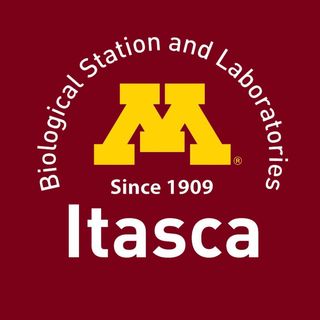Microbes, Minerals, & Metals
The Geochemistry & Geobiology Laboratory investigates the geochemical imprint of microbial life on the Earth’s surface environment through geological time by studying modern microbial metabolisms and the behavior of metals and minerals under varying aqueous redox regimes. A major focus of our work is understanding the impact of ferruginous conditions on regulating microbial activity and biogeochemical cycling.
Current Projects
Towards a better understanding of Tl isotope cycling under different redox conditions
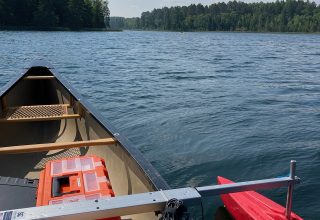
This work will explore how thallium isotopes behave under varying redox regimes, including sulfidic, ferruginous, and manganiferous. These conditions are found in three study lakes, and the data will be complemented with analyses of marine sediments.
PI: Chadlin Ostrander (WHOI)
Co-PI: Sune Nielson (WHOI), Colleen Hansel (WHOI), Elizabeth Swanner (ISU)
Funding: NSF Geobiology & Low-Temperature Geochemistry
Quantifying the extent and biogeochemical impact of modern ferruginous lakes

This project will investigate how common ferruginous meromictic lakes are, what causes them to form, and their part in the global carbon cycle. We will survey lakes in two regions of Minnesota, incorporating ISU undergraduates into fieldwork. Iron budgets will be constructed for two lakes, on in each region, to quantify the different iron sources. The effect of iron on photosynthesis, primary productivity, and oxygen production will be investigated within the deep chlorophyll maxima of these two lakes. Finally, the extent of carbon cycling through methanogenesis in the anoxic zones, and the proportion of methane that is lost to the atmosphere will be determined.
People: Kaleigh Block (MS student at ISU), Sajjad Akam (postdoc at ISU), Michelle Chamberlain (PhD student at ISU)
PI: Elizabeth Swanner (ISU)
Collaborators: Jessi Meyer & Riley Kniptash (University of Iowa; their work funded Center for Global and Environmental Research grant to Meyer)
Funding: National Science Foundation (NSF) Faculty Early Career Development Program
Refining the geochemical toolkit for paleoredox reconstruction
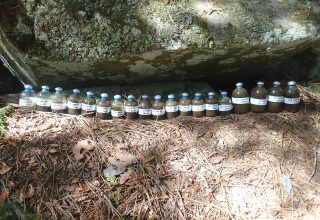
Although the behavior of the U isotope redox proxy, in combination with global mass balances, works quite well to distinguish oxic from anoxic sediments, it is unclear how ferruginous conditions fractionate U isotopes. This is important because ferruginous conditions were a pervasive feature of Precambrian oceans, but ferruginous intervals are now recognized as late as the Cretaceous. The ISU part of the project is investigating the behavior of U isotopes in ferruginous and meromictic Canyon Lake in the Huron Mountains of Michigan. This will involve not only isotope work, but also mass balance accounting of sources and sinks of U, as well as the residence time.
People: Farhan Bhuiyan (PhD student at ISU)
PI: Ariel Anbar (ASU)
Co-PI: Geoff Gilleaudeau (GMU), Elizabeth Swanner (ISU)
Funding: NASA Exobiology
Past Projects
Metal Utilization Across Eons (MUSE)
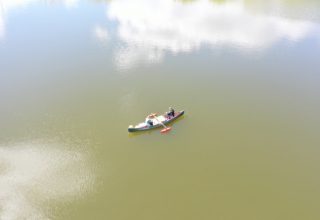
Why did life choose molybdenum for nitrogenase? This is the guiding question for this multi-disciplinary investigation. Our portion of the work will address the molybdenum requirements for nitrogen fixation by an anoxygenic phototroph, and how molybdenum availability regulates nitrogen fixation in ferruginous lakes that are analogs for the Archean ocean where nitrogenase likely developed.
People: Zackry Stevenson (PhD student at ISU)
PI: Betul Kacar (UW-Madison), Ariel Anbar (ASU)
Co-I: Elizabeth Swanner (ISU) collaborating with Anne Dekas (Stanford) and many others
Funding: NASA Interdisciplinary Consortia for Astrobiology Research
______________________________________________________________________
The history of biological activity and climate records in Loess Hills pedogenic carbonates.
This project is investigating the source of carbonate and biological processes involved in forming carbonate nodules in loess within Iowa’s soils. We are using carbon stable and radiogenic isotopes, as well as mineralogical and microscopic characterization to determine the timing of nodule formation and the source of the carbon.
People: Jazlyn Beeck (Undergraduate Geology and Environmental Studies major at ISU)
PI: Elizabeth Swanner (ISU)
Collaborator: Mark Rasmussen (ISU)
Funding: Leopold Center for Sustainable Agriculture
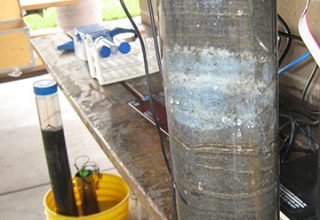
Determining the mechanism(s) of sedimentary pyrite formation.
Pyrite (FeS2) is a ubiquitous mineral in anoxic marine sediments. Its formation is enigmatic as the initial mineral product of microbial sulfate reduction is S2-, yet the average oxidation state of sulfur in pyrite is S1-. This study therefore aims to determine what aqueous and solid sulfur species are present in sediments where pyrite is forming.
Voltammetric detection of sulfur species will be coupled to synchrotron-based sulfur XANES and XRF mapping, along with traditional bulk techniques such as acid-volatile sulfide (AVS). It is hoped that a better accounting of intermediates will give insight into pyrite formation pathways, as well as the role of sulfur-cycling microbes to this process in anoxic sediments.
People: Raisa Islam (MS student at ISU)
PI: Elizabeth Swanner
Funding: American Chemical Society Petroleum Research Fund, Doctoral New Investigator (DNI)
Degradation of 2,4-D by Fe(II)-oxidizing bacteria in Iowa’s surface and groundwater
Although the broadleaf herbicide 2,4-D has been used for over 70 years, there is limited knowledge about the health effects of human exposure. 2,4-D is being increasingly added to new formulations of herbicides used on genetically resistant corn and soybeans and applied in greater amounts to Iowa’s row crops. Literature reports indicate that Fe(III) (oxyhydr)oxides with adsorbed Fe(II), produced during microbial Fe(III) reduction, are chemically reactive toward 2,4-D, helping to degrade it. As a similar reactive surface is produced during microbial Fe(II) oxidation, we hypothesize that 2,4-D can be degraded in Fe(II)-oxidizing conditions. Due to the high water table and iron-rich soils in much of Iowa, such Fe(II)-oxidizing conditions are common. We are testing this with isolates and enrichments of Fe(II)-oxidizing bacteria, as well as surveying for this process in local environments.

People: Zackry Stevenson (PhD student at ISU)
PI: Elizabeth Swanner (ISU)
Co-PI: Hui Tong (ISU; Guangdong Institute of Eco-environmental Science & Technology)
Funding: Center for Health Effects of Environmental Contamination (CHEEC), University of Iowa
A systems approach for understanding, predicting, and managing harmful algal blooms in Midwestern lakes
Freshwater Harmful Algal Blooms (HABs) threaten the safety of recreational and drinking waters worldwide. Here in Iowa, our team will identify genetic markers for cyanotoxin production for development of PCR-based chips. These will be used to screen waters from Iowa’s lakes for HABs, in addition to using metadata on samples to determine the ecological and environmental drivers of HABs. A multi-wavelength fluorometer approach will also be applied to tracking blooms and identifying when toxin measurements are needed. Another suite of activities will involve cultivation of cyanotoxin-producing strains, as well as toxin-degrading bacteria from
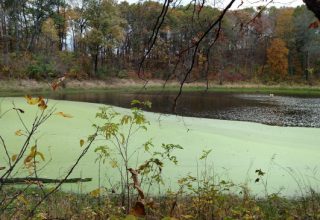
Iowa’s lakes. This systems approach will implement strategies for identifying and mitigating the effects of HABs in Iowa and regionally.
People: Tania Leung & Micah Fatka (PhD and MS students in Swanner group), Xuwei Liang (PhD in Ikuma group), and Jaejin Lee (postdoc in Howe group)
PI: Adina Howe, Kaoru Ikuma, Elizabeth Swanner and Jinlyung Choi
Funding: Environmental Protection Agency
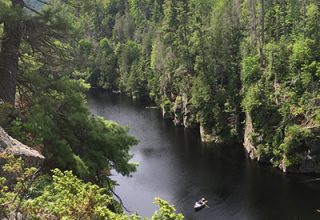
Biosignatures of coupled iron and carbon cycling in ferruginous lakes
Prior to the evolution of oxygenic photosynthesis, anoxygenic photosynthetic bacteria may have utilized Fe(II) as an electron donor to fuel marine primary productivity. As the habitat for these microbes, “photoferrotrophs”, on the modern Earth requires Fe(II), no oxygen, and sunlight, we have identified two lakes in the midwest to study carbon cycling under ferruginous conditions. We use a combination of traditional limnology approaches, and seasonal monitoring, along with next-generation (meta)genomic sequencing techniques and culturing to study lakes where anoxygenic photosynthesis is a major pathway. Our field sites are Brownie Lake in MN, and Canyon Lake in the Upper Peninsula of MI.
People: Nick Lambrecht (PhD and Postdoc at ISU)
PI: Elizabeth D. Swanner
Collaborators: Chad Wittkop (MNSU-Mankato), Sergei Katsev & Cody Sheik (UM-Duluth)
Funding: National Science Foundation and Huron Mountain Wildlife Foundation
Earth analogues for sedimentary manganese enrichments observed in a Martian paleolake
Trace elements in sedimentary manganese minerals forming in redox-stratified lakes, oxic lakes, and ancient chemically stratified marine basins will be quantified and used to help interpret the manganese enrichments in Gale Crater on Mars. Gale Crater is interpreted to be a redox-stratified paleolake. Calibrations for laser induced breakdown spectroscopy (LIBS) data from the Curiosity Rover currently in Gale Crater will be developed and data compared to Earth samples.
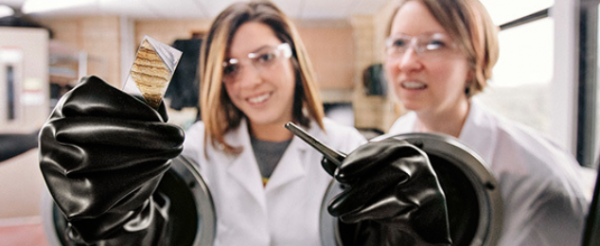
People: Gabbie Ledesma (Undergraduate Geology major at ISU)
PI: Elizabeth Swanner
Collaborators: Nina Lanza (Los Alamos National Laboratory), Chad Wittkop (MNSU-Mankato)
Funding: Iowa Space Grant Consortium Early Career Investigator Research Program (ECIRP)
The role of iron mobility from anoxic sediments in stimulating harmful algal blooms
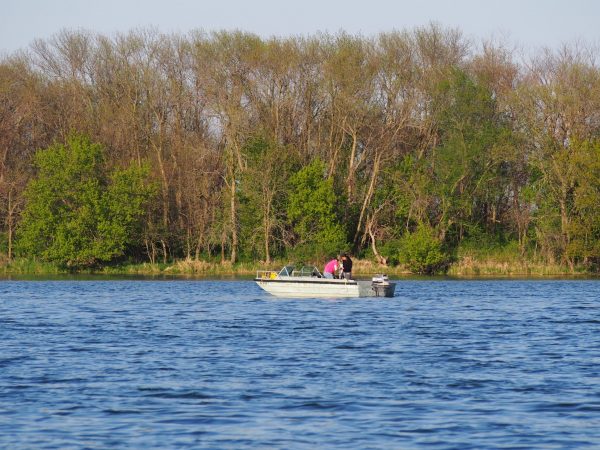
Harmful algal blooms (HAB) threaten the health and safety of Iowa’s surface waters, and are increasingly common. This project proposes to study if enhanced sedimentary sources of iron stimulate HABs. Work will involve geochemical and microbiological profiling of the water column, and measurement of sedimentary iron fluxes using microelectrodes.
People: Tania Leung (PhD student at ISU), Erin Atchison (Geology major at ISU)
PI: Elizabeth D. Swanner
Collaborators: Iowa Lakeside Laboratory Regents Resource Center
Funding: Iowa Water Center (USGS)
Funding sources









